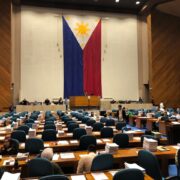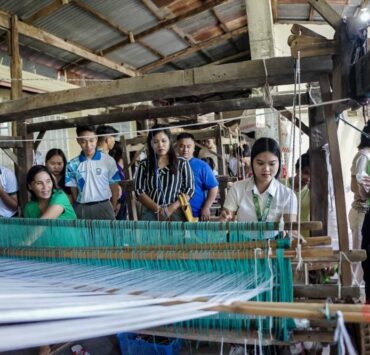Buckle up, Trump is back

The 47th president of the United States, Donald Trump, took his oath of office in Washington on Jan. 20. A peaceful transfer of power in America officially marked the stunning political comeback of Trump, unlike the chaotic departure he had in 2021.
But on this side of the Pacific, there are many worries that are troubling everyone: What are the prospects for the Philippines, which is the US’ oldest and most trusted ally in Southeast Asia, and Filipinos living and working in the US, in the next four years?
This two-fold question involves political (diplomatic), security (defense), and economic cooperation (including trade, labor, and people-to-people exchanges), which comprise the three legs of an overarching objective that has nuanced our bilateral relations with our former colonizer since 1946.
Anxiety over Trump’s isolationist approach to international relations and his unpredictable behavior when it comes to overhauling domestic policies, such as immigration, trade, and the environment, is not unfounded. Other nations, including the Philippines, have every right to worry about how he will shake things up.
There are fears that Trump, who sings the praises of Chinese leader Xi Jinping, would prioritize American interests over protecting the territorial integrity of nations such as the Philippines when it comes to the contested South China Sea (SCS), which includes the West Philippine Sea (WPS).
Major strategic partner
Attentive observers would notice that during his call with Xi last Friday, Trump was ecstatic: “President Xi and I will do everything possible to make the World more peaceful and safe!” Trump said in a post on Truth Social.
But there are positive signals that the “ironclad” alliance between Manila and Washington would hold under the Trump administration. With the 1951 Mutual Defense Treaty, the Philippines has cemented its status as a major strategic partner of the US outside of the North Atlantic Treaty Organization.
Last week, Trump’s pick to head the State Department, Marco Rubio, called on China to “stop messing around” with the Philippines and Taiwan. Chinese belligerent actions in the WPS “are forcing us to take counteractions because we have commitments to the Philippines and we have commitments to Taiwan that we intend to keep,” Rubio said.
Rubio was not short on details, clearly referencing the hostile presence of the “monster ship” (China Coast Guard 5901) in waters off Zambales province which, Rubio said, the “Philippines feels threatened by it, rightfully so.” Rubio rebuked China’s bullheadedness, declaring that the US would “defend the Philippines as its treaty ally” in the event of an attack.
Rotational presence
Such an unequivocal pronouncement from the US dispels fears of Chinese expansion remaining unchecked in the SCS. However, the Philippines must continue to insist through diplomatic channels that the US honor, both in word and deed, its security alliance with the Philippines which has stood the test of time.
Besides the Balikatan and maritime exercises, the Philippines has agreed to add four more sites under the Enhanced Defense Cooperation Agreement (Edca) to the existing five. This is a strategic move that greatly benefits the US interest.
In the absence of the US bases’ treaty that was rescinded in 1991, Edca legalizes the rotational presence of US troops on Philippine soil, giving the US a solid ground for defending both the Philippines and Taiwan. Edca’s immediate impact is in ensuring the freedom of navigation in the SCS, which is at the heart of the balance of power in the Indo-Pacific, besides obvious benefits to global shipping and trade. These Edca sites augur well for stability and security in the region because Edca fills the yawning gap in the US’ line of defense against China, which runs from East Asia to Southeast Asia to India.
Undocumented immigrants
Security begets development, if not prosperity. As the Philippines’ largest export market and one of its largest foreign investors, the US’ role in stabilizing the Philippine economy is crucial amid its rising national debt, hunger, and self-rated poverty, and persistent unemployment. A stable economy also benefits almost 400,000 US citizens living in the Philippines.
Finally, Trump’s mass deportation plans have placed the fate of millions of undocumented immigrants in limbo, including approximately 250,000-300,000 Filipinos who are illegally staying in the US. Philippine Ambassador to the US Jose Manuel Romualdez wisely advised them to avoid deportation by either leaving the US voluntarily or immediately consulting with immigration lawyers.
But we should continue to make representations to US authorities for a fair and orderly process. Providing refuge to around 200 Afghan refugees, who stayed in Manila for less than two weeks this January while the US processed their special immigrant visa applications, is an argument we can raise for a demanding reciprocal gesture from the US in treating our kababayan humanely and fairly.





















